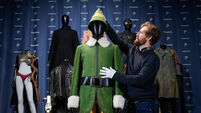Study fools people into thinking they have mannequin's body
People have been “fooled” into perceiving the bodies of mannequins and other individuals as their own in a new scientific experiment, it was revealed today.
The illusion of body-swapping was created by experts testing the brain’s perception of the physical self.














